- Offensive Techniques & Strategies

What to Discover or Recall . . .
Sideline out of bounds are very similar to baseline out of bounds in that the defense has a numerical advantage. However, sideline out of bounds, like all situations, teams must prepare to defend them, especially at the end of a game. A well planned and executed defensive attack can lead to an easy basket off a turnover or force the opponent into using a precious time out.
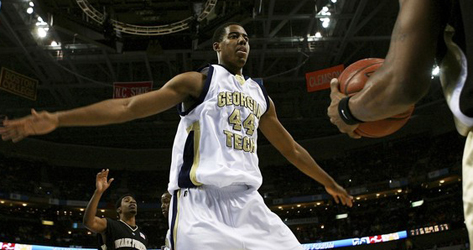
Four Proven Ways to Combat & Disrupt Sideline Out of Bounds Plays
Although, most teams spend ample time working on baseline out of bounds plays, a vast majority of them do not prepare adequately for sideline out of bounds situations. As a result, the defense can capitalize on this lack of preparation in addition to the 5 on 4 numerical player advantage. Various proven tactics to effectively combat and disrupt sideline out of bounds plays include:
| Jump Switching | Jamming (Disrupting) | Trapping | Combination Defenses |

1. Invert & Jump Switch Option
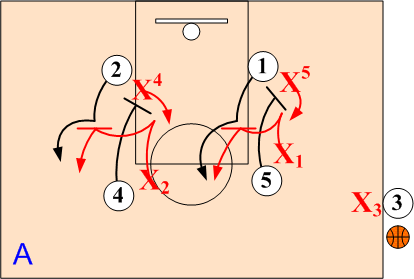
Phase 1. Jump Switch. If/when possible, X2 & X4 invert along with X1 & X5. Contact switch on down screens. X3 jams and smothers inbounder O3.

Phase 2. Box Pressure. If/when O3 inbounds the ball, X1 assumes an On Ball position pushing O1 to sideline pushpoint. X3 denies any return pass back to O3 and defender X2 denies ball reversal.

2. All Out Disruption (“Jam”) Option

Phase 1. Sag off. Prior to the official handing the ball to the inbounder, players should sag off and protect the basket against any quick lob pass or basket cut. The defender X5 guarding the inbound passer should play off creating a 5 on 4 situation, and anticipate the inbounds pass for three seconds.
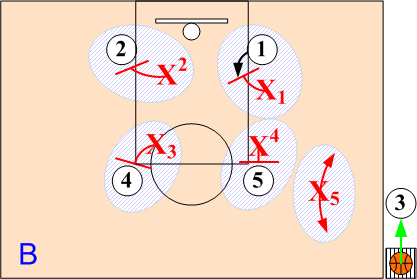
Phase 2. Jam or Smother: Just as the official hands the ball to the inbounder, defenders X1, X2, X3, and X4 step out and aggressively jam their opponents. Do not switch or allow any cuts into the lane taking an offensive charge whenever possible. Defender X5 plays off in the passing lanes for three counts, and then sprints back to the inbounds passer executing an aggressive smother with both hands up.
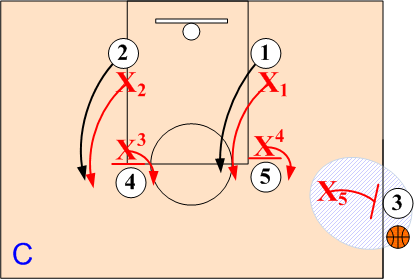
Phase 3. All out denial: X4 and X5 disrupt the screens by not allowing screeners O4 and O5 to move toward the basket. Defenders X1 and X2 also aggressively prevent their opponents from using the screens by assuming aggressive ear to chest pass denial defensive positions (no switching) on receivers O1 and O2. Defender X5, after third count, releases and aggressively smothers the inbounds passer with both hands up.

3. Half Court (“X”) Trap Option
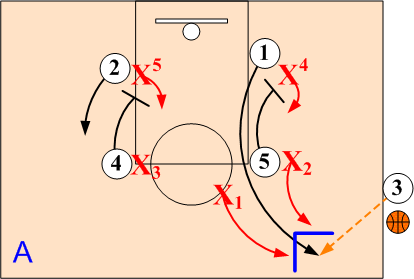
Phase 1. 1-2-2 zone alignment. Defense sets up in a 1-2-2 zone When ball is inbounded to O1, X1 and X2 go “Green” and trap O1. X3, X4, and X5 anticipate the pass out of the trap. In most cases the passer O1 will telegraph the pass.
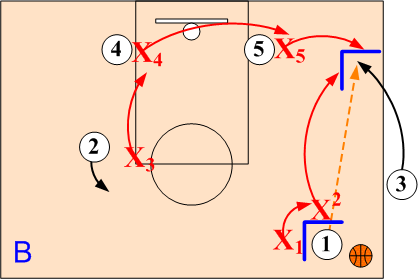
Phase 2. Pass out of trap. If/when ball is passed back to O3, X2 can either go GREEN and trap O3 with X5, or drop to Helpside I position on O2. X5 closes out to O3. X4 rotates over to O5, and O3 takes a low Helpside I position against O4.

4. Combination Defense Options
Box & One
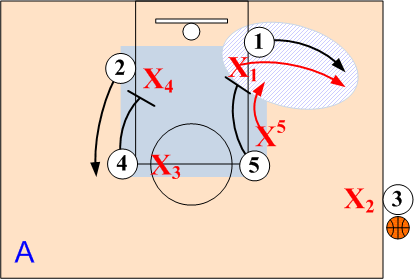
Phase 1. Box & One. Defensive chasers X1 and X2 assume tight pass denial positions on O1 and O2. X4 and X5 zone. X3 sags off inbounds passer O3 denying the passing lanes. In most cases the inbounds passer will telegraph the pass.

Phase 2. If/when the ball is passed in bounds, defenders X2, X3, X4 and X5 play a box zone, while chaser X1 maintains a tight pass denial positions against O1.
Diamond & One

Phase 1. Diamond & One. Defenders X2, X3, X4 and X5 play a Diamond zone defense while chaser X1 assumes a tight pass denial position on O1. X2 pressures the passer on the inbounds pass and then drops back into the top of the diamond zone.
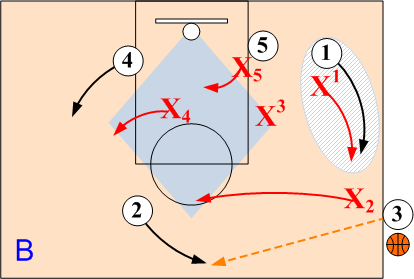
Phase 2. When the ball is passed in bounds X2, X3, X4 and X5 play a diamond zone, while X1 maintains a strong pass denial positions on O1.
Triangle & Two
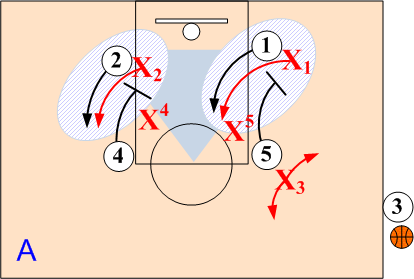
Phase 1. Triangle Two. Defensive chasers X1 and X2 assume tight pass denial positions on O1 and O2. X4 and X5 zone. X3 sags off inbounds passer O3 denying the passing lanes. In most cases the inbounds passer will telegraph the pass.
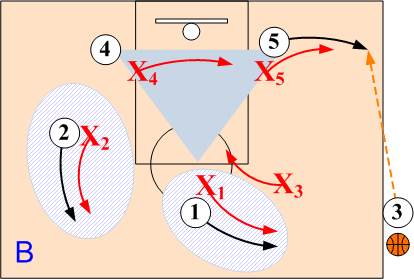
Phase 2. If/when the ball is passed in bounds X3, X4 and X5 play a triangle zone, while X1 and X2 maintain tight pass denial positions on O1 and O2.
Combo Zone
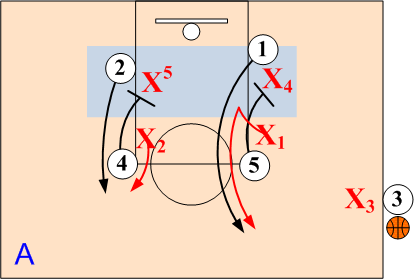
Phase 1. Combo Zone. Defenders. X4 and X5 zone on baseline. X1 and X2 invert and switch as X3 pressures the inbounds passer.
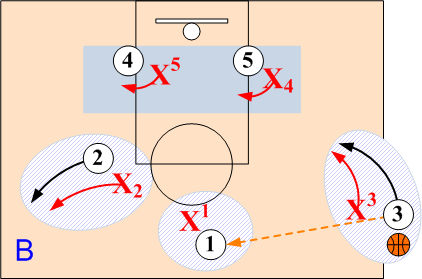
Phase 2. If/when the ball is passed in bounds X1, X2 and X3 assume strong pass denials on O1, O2 and O3. Defenders X4 and X5 zone protecting against dribble penetration.
Return to Defensive Strategies - Click Here
Return to HoopTactics - Click Here
© 2026 HoopTactics All Rights Reserved.
